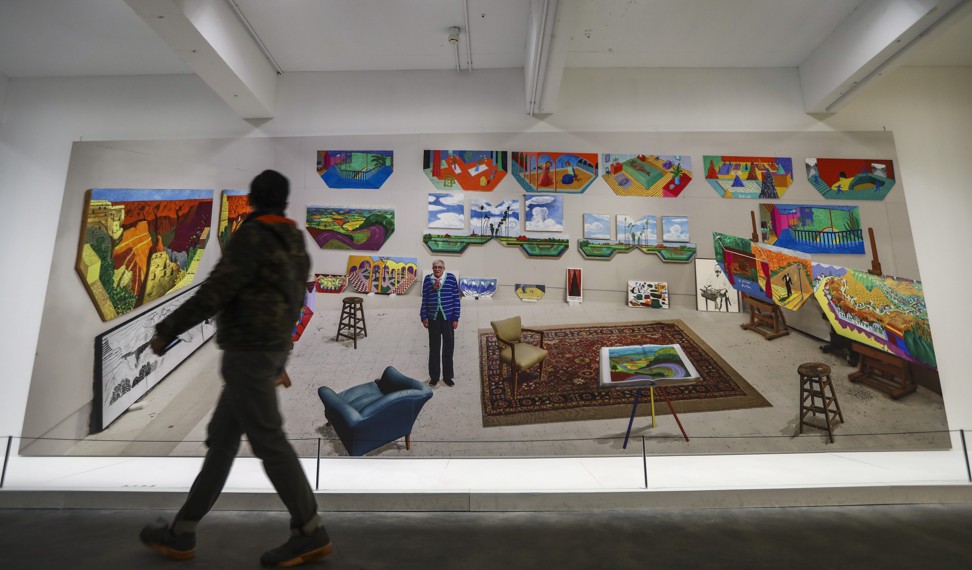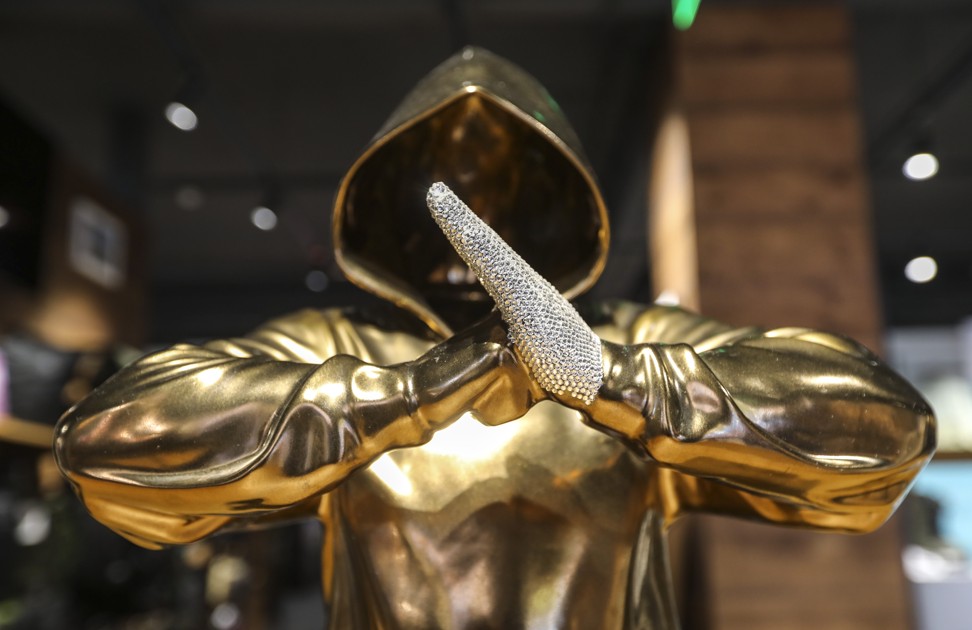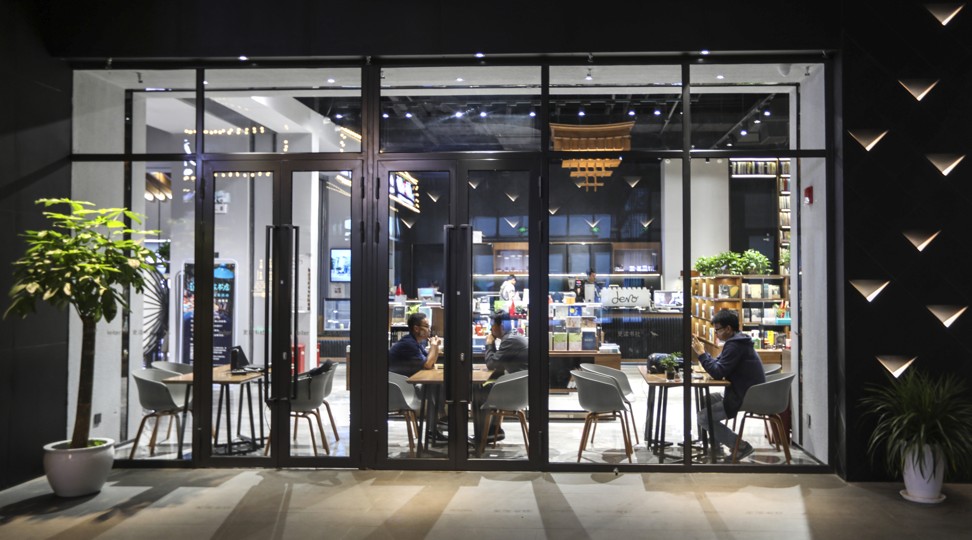
David Hockney in the house: Beijing temple’s revival starts with art museum – Shanghai Xintiandi restorer talks us through the project
- Longfu Temple, near the Forbidden City, is being turned into a new cultural destination by Tony Wong, who overcame doubts about its feng shui
- M Woods Museum opened there as part of the project, with a show of works by British artist Hockney; a recreation of original Ming dynasty temple adorns a roof

When Tony Wong Hong-wang, who has led more than 50 heritage revitalisation projects in China, was invited to restore the Longfu Temple in Beijing, he had reservations.
The first temple was built on the site in 1452 by the Jingtai Emperor of the Ming dynasty, and was the only one in the city to accommodate both lamas and monks. Near the Forbidden City and commercial centre Wangfujing, the site gradually evolved into a bustling market hub over the centuries.
A fire in 1901 destroyed the original temple and it was not until 1988 that the nine-storey Longfu Tower was built in its place. Another devastating fire in 1993 ravaged the tower, and subsequent restoration efforts did not return the site to its former glory.
“People told me it has bad feng shui,” says Wong, chief executive of property developer Kicers Group.

However, the Beijing State-Owned Assets Management Company, which operates under the municipal government, was convinced that Wong was the right person to undertake the job, having seen what his company did with Shanghai Xintiandi and Shanghai’s Bridge 8 Creative Industrial Zone, which are considered successes.
“The key for a successful heritage rejuvenation project is to have a proper positioning,” says Wong, who eventually agreed to take on the challenge. “For the Longfu Temple project, we don’t want it to become a traditional shopping district. Culture should be the entry point. Visitors come to it for culture. Retail, dining [and other consumer] activities are supplementary.”

Covering 180,000 square metres (1.9 million square feet), the 10 billion yuan (US$1.3 billion) the Longfu Temple revitalisation project is divided into two phases.
The first phase includes the recent opening of the M Woods Museum; its inaugural exhibition – a solo show by British artist David Hockney – is a collaboration with Tate Britain and Tate Modern. The nine-storey Longfu Tower has been refurbished. On its roof are four structures that recreate the original architecture of the historic Longfu Temple.
The roof, which also features exhibition and conference spaces, overlooks the Forbidden City and adjacent hutongs, the warrens of alleyways lined with single-storey homes that once spread across much of Beijing.
Its second phase, expected to open in 2023, will feature international and Chinese culture zones, according to Chiu Bing-hang, director of Longfu Cultural Centre and chief marketing consultant of LongFu Si. One of the partners in the Chinese culture zone will be the Forbidden City.
“Under construction now is the Forbidden City tower. It will hold digital exhibitions [and other events],” Chiu says.



“The existing two theatres will be revamped. One will be turned into a new technology experience centre,” Chiu says.
“For the international zone, we are in talks with [overseas arts institutions]. One idea is to introduce the souvenir shops of prestigious foreign museums. So far, we have signed memorandums of understanding with the UK’s Design Museum and V & A Museum. Visitors can buy their souvenirs without going overseas.”
Chiu says they took lessons from cultural landmarks including Tokyo’s Roppongi entertainment district and London’s Convent Garden when working on the design.


“There are other arts venues in the vicinity of Longfu Temple, including the National Art Museum of China. Longfu Temple’s upgrade will boost the cultural attractiveness of the whole area,” Chiu says.
Wong says that, as part of the agreement with the Beijing State-Owned Assets Management Company, the project has to cater to residents of two adjoining hutongs, where hundreds of people live.
“We want to preserve the hutongs to retain old tradition. Existing public areas there will be upgraded,” he says.

“The hutong dwellings have fragmented ownership, with some landlords being untraceable. The government will find out the condition of each household. There won’t be any forced relocation. For those who are willing to move out of the area of their own accord, the premises they vacate will be turned into restaurants and miniature galleries and hotels.”